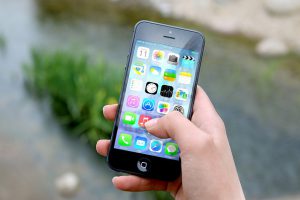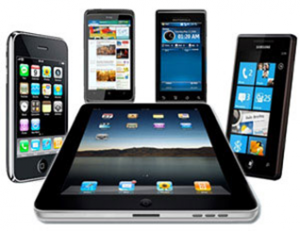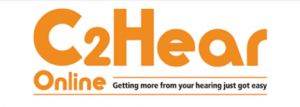August 30, 2018, by Mel Ferguson
Knowledge is power: using eHealth to improve hearing-related knowledge for patients, partners and professionals
 Welcome to the August issue of the Hearing Matters blog by the Mild to Moderate Hearing Loss Group at the NIHR Nottingham Biomedical Research Centre. This month, we look at eHealth solutions to improve knowledge about hearing loss, hearing aids and communication.
Welcome to the August issue of the Hearing Matters blog by the Mild to Moderate Hearing Loss Group at the NIHR Nottingham Biomedical Research Centre. This month, we look at eHealth solutions to improve knowledge about hearing loss, hearing aids and communication.
If you are an audiologist reading this, how confident are you that all the essential information and advice you give your first-time hearing aid patients is understood, absorbed, and then acted upon, once they leave the comfort of your clinic room?
The problem with hearing aids
Hearing aids may be small, and look simple. However, they are complex electronic devices, difficult to use, and take time to get used to. They do not return hearing to normal, and there is often a mismatch between the benefits of hearing aids that patients receive and family and friends perceive. Each, and all, of these reasons contribute to the ‘The Kitchen Drawer Syndrome’. This is despite hearing aids being shown to be clinically- and cost-effective.
Knowledge is power
Commonly attributed to Sir Francis Bacon in 1597, the power of knowledge has more recently recognised as a key component of patient-centred care and self-management of hearing loss. National guidelines (e.g. BSA, NICE ), recommend good quality information for patients and family members.
Patient education to promote knowledge on hearing loss, hearing aids and communication is often delivered verbally by audiologists, yet it is widely recognised that clinical information is often not retained. “By the time you get home you’ve forgotten most of it”, is a refrain that many patients (and audiologists) will be familiar with. And it’s not just patients, knowledge is poor for partners, non-hearing healthcare professionals and the public.
 eAudiology as a solution
eAudiology as a solution
So what can be done about this? Well, let’s consider knowledge exchange in terms of technology to supplement audiologist’s advice for hearing health (eAudiology). We have co-produced an interactive, multimedia educational intervention (C2Hear) for hearing aid users and audiologists to provide high-quality information and demonstrate complex concepts. Remote delivery of C2Hear through the internet and mobile technologies (e.g. smartphones, tablets) enables easy access and a wide reach. To date, the freely available C2Hear Online has had >130,000 views internationally from >50 countries (38% from N America). A US version has been developed and we have plans for a Chinese version.
Helping hearing aid users to help themselves
A large randomised controlled trial of hearing aid users has shown that C2Hear resulted in better knowledge and practical hearing aid handling skills, and increased hearing aid use. Patient activation and self-efficacy were increased, and anxiety was reduced. Patients liked C2Hear, reporting that it was highly useful (9/10), enjoyable and preferable to written information. Over half the hearing aid users reported that they used the RLOs two or more times, suggesting self-management of hearing loss.
 The 3-I’s: individualised, interactive and inclusive
The 3-I’s: individualised, interactive and inclusive
To futureproof C2Hear and to move away from the current ‘one size fits all’ approach, a new m-health programme specifically designed for use with mobile technologies has been designed to meet the needs of the individual (m2Hear). It consists of a series of 42 short clips (~1min) and includes more activities/interaction to maximise user-engagement and learning. M2Hear is currently being trialled. Preliminary results show that users rate the quality of m2Hear and perceived impact on behaviour change highly.
 To promote inclusivity, we have a developed a mobile-enhanced version of Communication Tactics for patients and their communication partners (CPs) to use together. Results show that this ‘joint-working’ highlights communication challenges, prompts novel discussions about communication, and helps CPs change behaviour to improve communication. To quote Matt Mullenweg “technology works best when it brings people together”.
To promote inclusivity, we have a developed a mobile-enhanced version of Communication Tactics for patients and their communication partners (CPs) to use together. Results show that this ‘joint-working’ highlights communication challenges, prompts novel discussions about communication, and helps CPs change behaviour to improve communication. To quote Matt Mullenweg “technology works best when it brings people together”.
Dr Mel Ferguson, Research Lead Mild to Moderate Hearing Loss
This blog was first published by Phonak Audiology Blog (August 14th) #eaudiologyphonak
The Phonak eAudiology webinar by Mel Ferguson can be found here: https://learning.phonakpro.com/course/view.php?id=656
No comments yet, fill out a comment to be the first

Leave a Reply